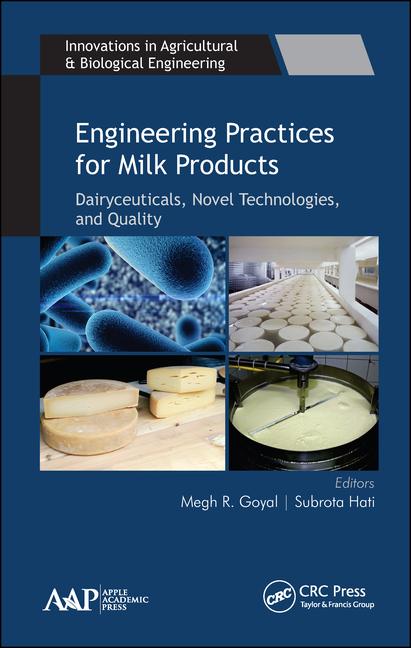The Case For Simplifying Ingredient Statements
Consumers have hectic, complicated lives. The 2011 trends forecast by the Food Channel (in conjunction with Culturewaves, the International Food Futurist and Mintel International) states: “for years we talked about simplicity, sometimes under names like ‘local’ or ‘social consciousness’ or ‘green.’
Consumers have hectic, complicated lives. The 2011 trends forecast by the Food Channel (in conjunction with Culturewaves, the International Food Futurist and Mintel International) states: “for years we talked about simplicity, sometimes under names like ‘local’ or ‘social consciousness’ or ‘green.’ But it was like true simplicity was second string - something that we should probably want, but didn’t, not really. Well, that whole paradigm is quickening thanks to the economy. As we head into 2011, we see people beginning to cherish simplicity.”
In the name of food choices and information, we have complicated the shopping experience by asking consumers to not only understand the difference, but also to discern and decide among sustainable, green, organic, healthy, hormone-free, antioxidants, local, natural, fair-trade, heart healthy, digestive health and a host of other social, environmental, economical, political and physiological benefits. And this is just the eye-catching large print on packages.
Then we ask consumers to dig deeper and look at a nutrition facts panel and an ingredient statement to make an informed decision about Daily Values and what the food actually contains. Then they have to determine what to buy. For many consumers, these shopping decisions all must be done in 30 minutes or less, all while multitasking, like texting family members, thinking about upcoming events or trying to calm the screaming little one(s) in the shopping cart.
While we should not underestimate the fact that food consumers are savvier and more educated, the upshot is many consumers are going to be receptive to simple products with simple messages and simple labels. These are what I call “no-brainer food choices.”
Here is an ingredient statement for low-fat plain yogurt: “cultured pasteurized low-fat milk and live, active cultures (L. Bulgaricus, S. Thermophilus).” Commonly, there will be some added stabilizer, sweetener, color and/or fruit, and/or mold inhibitor that lengthens and complicates the product ingredient statement. While these ingredients have specific and valuable functions, finding ways to keep the list simple may be a good opportunity.
For example, stabilizers minimize the typical wheying off and also enhance the mouthfeel of many yogurts. But increasing milk solids, careful use of exopolysacharride-producing cultures, use of effective heat treatments prior to culturing and careful handling and cooling of the yogurt post fermentation can achieve similar results and keep ingredient statements much shorter.
Might this explain the growing success of Greek-style yogurt? Suppliers are also finding new cultures (bioprotectants) that can control or inhibit spoilage bacteria and mold growth. They enhance product shelf life without having to write those chemical preservatives on the ingredient statements.
A Cheddar cheese ingredient statement can read: “pasteurized milk, cheese cultures, salt and enzymes.” Similarly, most other natural cheeses also can be characterized as simple products with simple food labels and simple ingredient statements. Look at an unsalted butter ingredient statement: “cream.” One ingredient!
Dairy proteins can emulsify, build viscosity, enhance texture and prevent phase separations in many food systems. What consumer wouldn’t rather read milk protein or whey protein on a product label instead of some of the alternatives such as carageenan, xanthan gum, sodium stearyl lactylate or di-sodium phosphate? As we continue to enhance the truly amazing functionality of dairy ingredients, there will be even more opportunities to use them to improve the simplicity of the food products without sacrificing product performance.
So whether we are maintaining or just highlighting the elegant simplicity of dairy foods or we are using dairy ingredients that are more easily understood by consumers for the functional performance, the timing could not be better to “simplify.” Sometimes the “real food” alternative is a more expensive proposition and it will be up to processors to determine if these approaches to simplifying labels and ingredient statements provide enough value to justify the added costs.
Companies offering products and services that can simplify a shopper’s day will likely be well received.
Consumers have hectic, complicated lives. The 2011 trends forecast by the Food Channel (in conjunction with Culturewaves, the International Food Futurist and Mintel International) states: “for years we talked about simplicity, sometimes under names like ‘local’ or ‘social consciousness’ or ‘green.’ But it was like true simplicity was second string - something that we should probably want, but didn’t, not really. Well, that whole paradigm is quickening thanks to the economy. As we head into 2011, we see people beginning to cherish simplicity.”
In the name of food choices and information, we have complicated the shopping experience by asking consumers to not only understand the difference, but also to discern and decide among sustainable, green, organic, healthy, hormone-free, antioxidants, local, natural, fair-trade, heart healthy, digestive health and a host of other social, environmental, economical, political and physiological benefits. And this is just the eye-catching large print on packages.
Then we ask consumers to dig deeper and look at a nutrition facts panel and an ingredient statement to make an informed decision about Daily Values and what the food actually contains. Then they have to determine what to buy. For many consumers, these shopping decisions all must be done in 30 minutes or less, all while multitasking, like texting family members, thinking about upcoming events or trying to calm the screaming little one(s) in the shopping cart.
While we should not underestimate the fact that food consumers are savvier and more educated, the upshot is many consumers are going to be receptive to simple products with simple messages and simple labels. These are what I call “no-brainer food choices.”
Milk, yogurt are no-brainers
Many dairy foods are ideally suited to take advantage of this simplicity message. For example, low-fat milk has only three ingredients: low-fat milk, vitamin A palmitate and vitamin D3. Yet, do we communicate this to the consumer? Does fluid-milk packaging and the associated graphics communicate the elegant simplicity of the nutrients that are delivered in this simple food? Do we make sure low-fat milk is a no-brainer food choice?Here is an ingredient statement for low-fat plain yogurt: “cultured pasteurized low-fat milk and live, active cultures (L. Bulgaricus, S. Thermophilus).” Commonly, there will be some added stabilizer, sweetener, color and/or fruit, and/or mold inhibitor that lengthens and complicates the product ingredient statement. While these ingredients have specific and valuable functions, finding ways to keep the list simple may be a good opportunity.
For example, stabilizers minimize the typical wheying off and also enhance the mouthfeel of many yogurts. But increasing milk solids, careful use of exopolysacharride-producing cultures, use of effective heat treatments prior to culturing and careful handling and cooling of the yogurt post fermentation can achieve similar results and keep ingredient statements much shorter.
Might this explain the growing success of Greek-style yogurt? Suppliers are also finding new cultures (bioprotectants) that can control or inhibit spoilage bacteria and mold growth. They enhance product shelf life without having to write those chemical preservatives on the ingredient statements.
A Cheddar cheese ingredient statement can read: “pasteurized milk, cheese cultures, salt and enzymes.” Similarly, most other natural cheeses also can be characterized as simple products with simple food labels and simple ingredient statements. Look at an unsalted butter ingredient statement: “cream.” One ingredient!
Emphasize simplicity
Ice cream manufacturers, in their efforts to manage costs and maintain good product characteristics, have seen their product ingredient statements grow. Yet Häagen-Dazs successfully countered with “Simply Five.” True, Häagen-Dazs was always produced with a low number of ingredients, but this example shows how repositioning the product with an emphasis on its simplicity can rejuvenate consumer interest (purchase). Many traditional dairy foods are simple no-brainers, but you have to remind the consumer!Dairy proteins can emulsify, build viscosity, enhance texture and prevent phase separations in many food systems. What consumer wouldn’t rather read milk protein or whey protein on a product label instead of some of the alternatives such as carageenan, xanthan gum, sodium stearyl lactylate or di-sodium phosphate? As we continue to enhance the truly amazing functionality of dairy ingredients, there will be even more opportunities to use them to improve the simplicity of the food products without sacrificing product performance.
So whether we are maintaining or just highlighting the elegant simplicity of dairy foods or we are using dairy ingredients that are more easily understood by consumers for the functional performance, the timing could not be better to “simplify.” Sometimes the “real food” alternative is a more expensive proposition and it will be up to processors to determine if these approaches to simplifying labels and ingredient statements provide enough value to justify the added costs.
Companies offering products and services that can simplify a shopper’s day will likely be well received.
Looking for a reprint of this article?
From high-res PDFs to custom plaques, order your copy today!







